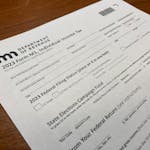Question
When examining a potential new market for my products, how do I establish the size of that market?
Susanne Riehle, Studio Productions Inc. Creative Tools for Creative People, studio-productions-inc.com
Answer
Thanks to the taxpayers and a constitutional mandate, the Census Bureau (www.census.gov) has a very large amount of demographic information that you can have for free.
Step 1: Ask yourself some questions. What geographic area will I reasonably be able to sell and distribute to? Is the typical user of my product going to be male or female? What will be the typical age of the user? What is the typical income level of someone who can afford this product?
Step 2: Once you have answered these questions, you can screen the census data for the number of people in a specific state or county who theoretically have all those characteristics of sex, age, etc.
Step 3: Take this number of people and multiply it by what percentage you think could be your potential market share.
For instance, if you will be the sole distributor because of a legally filed patent right, your theoretical market share could be as high as 100 percent. If however you think there are potentially 20 other firms that could offer a similar product, then 5 percent is more likely a closer estimate of your potential market share (100 percent divided by 20 competitors = 5 percent).
Step 4: Recognize that you will likely not reach the number you found at Step 3 right away. Typically a new product that has never been offered before needs up to five years to fully penetrate a population. That means your year-by-year forecast should ramp up from zero today to the number you have from Step 3 by year five.
This might not give you a perfect forecast, but it will at least provide some concrete, hard numbers to base your capital and advertising budgets on.



